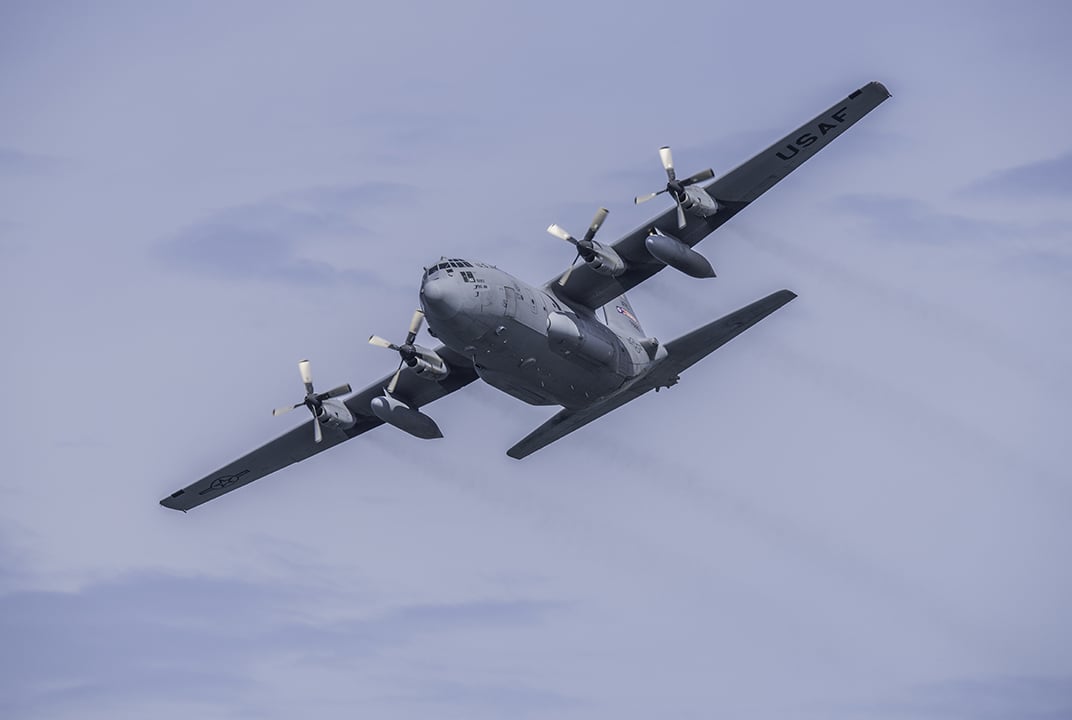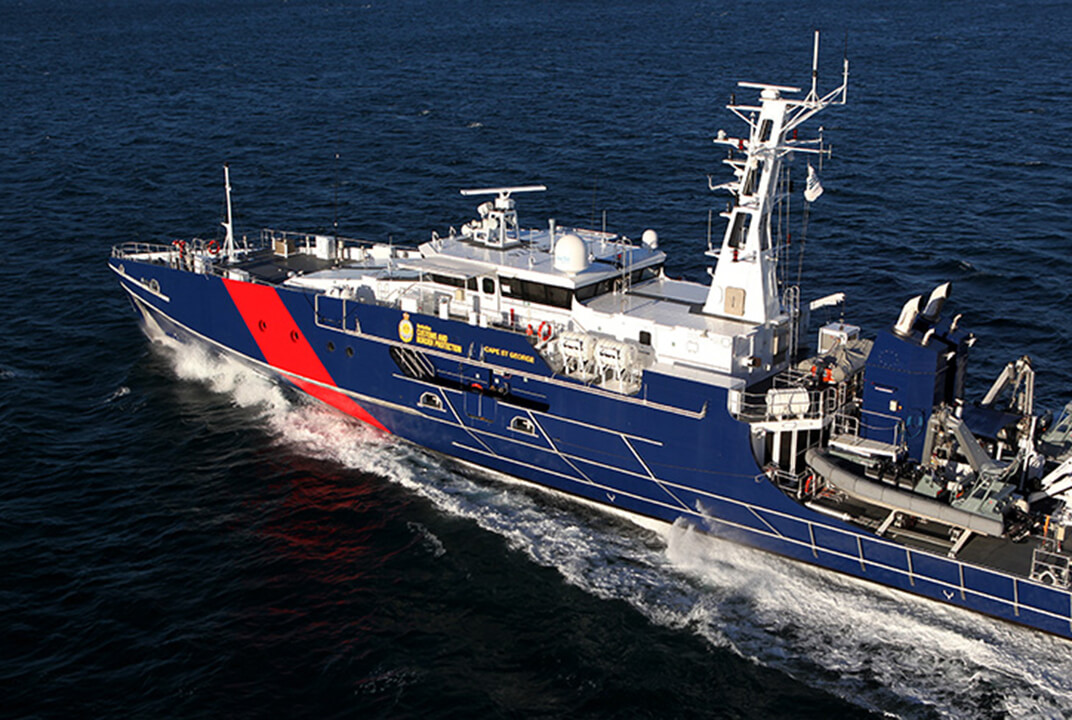Insight | How Inmarsat’s mission-centric dedication ensures optimal ISR
How Inmarsat’s mission-centric dedication ensures optimal ISR
null
In the first of two blogs, Inmarsat SVP Rebecca Cowen-Hirsch looks at the critical importance of dependable and secure COMSATCOM to optimise Airborne Intelligence, Surveillance and Reconnaissance,
“The mission is everything.”
This statement speaks to a firmly held belief – a core commitment – that has driven Inmarsat for decades. We are about far more than transponders. We are about supporting the servicemen and women whose missions – and lives – depend upon our ability to step up and provide the most dependable, flexible, secure and affordable satellite communication (SATCOM) capability no matter when or where.
Recent panel discussions at the 13th Annual DoD Commercial SATCOM Workshop demonstrated the critical importance of this focus. During the sessions, top military leaders discussed how the following two urgent areas – Airborne Intelligence, Surveillance and Reconnaissance (AISR) and protected SATCOM — require new approaches. Our next two-part blog will focus on these new approaches that Inmarsat has both advocated for and invested in as a long-term mobile-centric business strategy.
Optimal capability for AISR applications
Panelists agreed that the government must adopt better business models for acquiring commercial SATCOM (COMSATCOM) in order to optimize ISR and Command and Control (C2) capabilities while saving tax dollars. Already, industry is collaborating with federal leaders toward this goal through initiatives such as the U.S. Air Force’s Analysis of Alternatives (AoA). With such developments steering industry and government toward the path of a productive partnership, there is a great opportunity to work together to augment and complement SATCOM in support of Command, Control, Communications, Computers, Intelligence, Surveillance and Reconnaissance (C4ISR) operations. Panelists discussed in-depth, for example, the need for interoperable technology solutions to support Airborne ISR, with global coverage, high-throughput, small-footprint antennas and anywhere/anytime connectivity, along with SATCOM diversity, reliability and security.
Outside of this specific conference, there is an ongoing dialogue taking place on the critical importance of having all new U.S. government aircraft systems and drones compatible with existing military SATCOM (MILSATCOM) systems and new capabilities offered by the commercial industry. Current Ku terminals, however, cannot readily do this because that frequency band is far removed from military bands and thus requiring separate hardware. Ka is the preferred bandwidth over Ku due to the fact that Ka-band includes frequencies used by both military and civilian users. This means that Ka-band terminals can switch seamlessly between MILSATCOM and COMSATCOM always-on systems, permitting users to make the best choice for their mission.
Ubiquitous coverage
Another advantage of Ka vs Ku stems from the fact that older Ku-band satellites distribute power throughout the world via large regional beams, resulting in irregular ’hot‘ and ’cold‘ spots for data transmission. Platforms in a cold spot can experience bandwidth drop by as much as 90 percent. Ka-band high-throughput satellite (HTS) coverage, on the other hand, is created by many smaller ’spot’ beams whose hot spots can be ‘stitched’ together, resulting in highly consistent coverage. This ubiquitous coverage leaves no AISR user ‘out in the cold’ when the need for high-fidelity intelligence from a remote area is required.
Furthermore, airborne planners prefer smaller satellite antennas because higher performance can fit on smaller airframes and blend better into aerodynamic surfaces, thus, extending fuel efficiency and range, as well as reducing the “signature” in covert applications. For this, Ka-band is emerging as the top, preferred military option, with four times the transmit signal gain performance of Ku-band.
The bottom-line value of Ka-band for AISR is clear: it is the optimum band for most modern intelligence and warfare requirements. With worldwide commercial wideband augmentation, military users can steer their capacity anywhere in the world to seamlessly augment their Wideband Global SATCOM (WGS) system coverage, connecting their same WGS-certified SATCOM terminals to the same destined Point of Presence, or through commercially provided secure enclaves. Users benefit from end-to-end readily available capability, delivered as managed service – SATCOM as a Service – at a much more affordable cost and much faster rate than the current acquisition model allows. With solid service level agreements and committed information rates worldwide, users get what they ask for, and the quality of the acquired service is assured. Because of this, SATCOM as a Service establishes mobile, high-throughput, easy-to-use connectivity the way government users seek it: easily, affordably and operationally available – no matter where they operate.
Read part two of Rebecca Cowen-Hirsch’s blog How Inmarsat’s mission-centric dedication ensures protected SATCOM on 29 January 2018.
About the author
Rebecca M. Cowen-Hirsch is Inmarsat Senior Vice President for Government Strategy and Policy in the United States Government (USG) Business Unit, based in Washington. Ms. Cowen-Hirsch brings 25 years of defense, aerospace, and executive leadership experience to Inmarsat. As a decorated member of the Senior Executive Service (SES) in the U.S. Department of Defense, she served as the Program Executive Officer for SATCOM, Teleport and Services at the Defense Information Systems Agency (DISA) and in several key SES executive positions including the first Vice Component Acquisition Executive for DISA, with executive management responsibility for the acquisition oversight and horizontal integration of DISA’s products, services, and programs. Ms Cowen-Hirsch established the Defense Spectrum Office, serving as its first Director where her responsibilities included the development of national security spectrum strategic plans and policy, and national and international negotiation of defense spectrum issues. Her broad defense career ranged from systems engineering, experimental flight test, program management, spectrum management, and a wide range of executive leadership positions. Ms. Cowen-Hirsch was a rated experimental flight test engineer; was the first female civilian Mission Commander for the Advanced Range Instrumentation Aircraft (ARIA) mission, and was the recipient of an Exemplary Service Medal for her years of selfless service to the Department of Defense. Ms Cowen-Hirsch has a Bachelor of Science Degree in Electrical Engineering, conducted post-graduate studies in Engineering Management, and is a graduate of the University of Tennessee Space Institute Experimental Flight Test Program; the DoD’s Acquisition Management Program; and the Cambridge Senior Executive Leadership Program.


